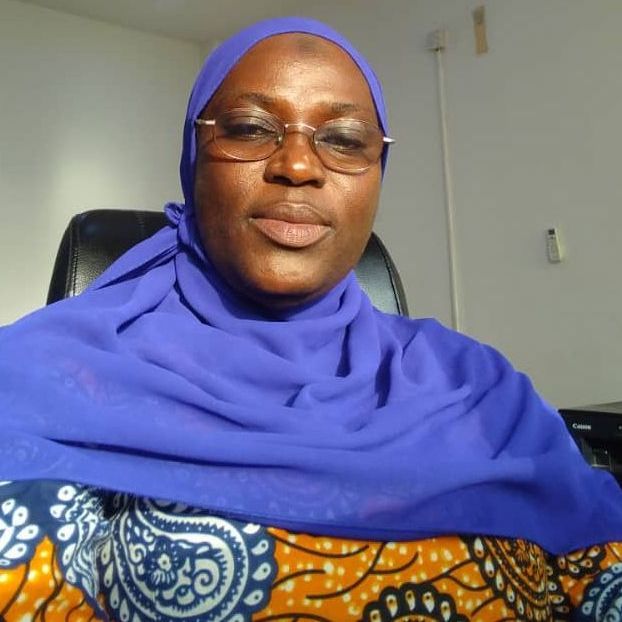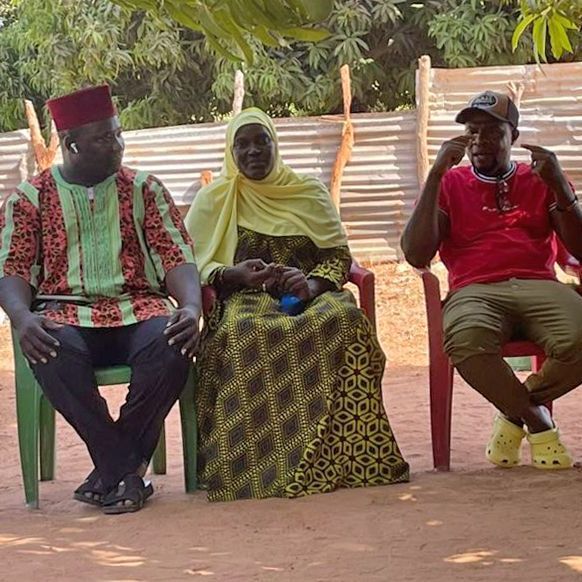Gambia
Gambia
Gambia
KETAAKETI works in Gambia with the local non-governmental organization
Kusek Di Kunyil
(since 2023)
KETAAKETI works in Gambia with the local non-governmental organization
Kusek Di Kunyil
(since 2023)
KETAAKETI works in Gambia with the local non-governmental organization
Kusek Di Kunyil
(since 2023)
Why Gambia?
The smallest country in Africa is located on the west coast and is completely surrounded by Senegal. As a former English colony in French-influenced Senegal, there are considerable cultural differences, although the same ethnic groups live in both countries.
Gambia is dominated by the river of the same name, which gives the country an astonishingly rich flora and fauna. This and the beautiful fine sandy beaches on the Atlantic mean that Gambia can earn foreign currency from tourism. Nevertheless, Gambia is one of the poorest countries in Africa. The country has no natural resources that could be exploited economically. In addition to tourism, fishing and agriculture are the country's main sources of income.
Peanuts and their byproducts account for 78% of export earnings. Every second agricultural field is a peanut field. In contrast, rice, the most important staple food, has to be imported at great expense because there is not enough production in the country. Three quarters of the rural population suffer from poverty and hunger.
Bildtitel
Untertitel hier einfügenButtonBildtitel
Untertitel hier einfügenButtonBildtitel
Untertitel hier einfügenButtonBildtitel
Untertitel hier einfügenButton
Bildtitel
Untertitel hier einfügenButton
With an estimated 2.5 million inhabitants, Gambia has a relatively dense population and the population is still growing rapidly, with almost half of the Gambian population being young people. The reason for this is a high birth rate. At the same time, infant and child mortality is extremely high, especially in rural areas. Education and prevention campaigns are only moderately successful due to the high illiteracy rate. It is assumed that in rural areas up to 75% of women over the age of 15 cannot read or write.
Why Gambia?
The smallest country in Africa is located on the west coast and is completely surrounded by Senegal. As a former English colony in French-influenced Senegal, there are considerable cultural differences, although the same ethnic groups live in both countries.
Gambia is dominated by the river of the same name, which gives the country an astonishingly rich flora and fauna. This and the beautiful fine sandy beaches on the Atlantic mean that Gambia can earn foreign currency from tourism. Nevertheless, Gambia is one of the poorest countries in Africa. The country has no natural resources that could be exploited economically. In addition to tourism, fishing and agriculture are the country's main sources of income.
Peanuts and their byproducts account for 78% of export earnings. Every second agricultural field is a peanut field. In contrast, rice, the most important staple food, has to be imported at great expense because there is not enough production in the country. Three quarters of the rural population suffer from poverty and hunger.
Bildtitel
Untertitel hier einfügenButtonBildtitel
Untertitel hier einfügenButtonBildtitel
Untertitel hier einfügenButtonBildtitel
Untertitel hier einfügenButton
Bildtitel
Untertitel hier einfügenButton
KUSEK IN KUNYIL
Why Gambia?
The smallest country in Africa is located on the west coast and is completely surrounded by Senegal. As a former English colony in French-influenced Senegal, there are considerable cultural differences, although the same ethnic groups live in both countries.
Gambia is dominated by the river of the same name, which gives the country an astonishingly rich flora and fauna. This and the beautiful fine sandy beaches on the Atlantic mean that Gambia can earn foreign currency from tourism. Nevertheless, Gambia is one of the poorest countries in Africa. The country has no natural resources that could be exploited economically. In addition to tourism, fishing and agriculture are the country's main sources of income.
Peanuts and their byproducts account for 78% of export earnings. Every second agricultural field is a peanut field. In contrast, rice, the most important staple food, has to be imported at great expense because there is not enough production in the country. Three quarters of the rural population suffer from poverty and hunger.
Bildtitel
Untertitel hier einfügenButtonBildtitel
Untertitel hier einfügenButtonBildtitel
Untertitel hier einfügenButtonBildtitel
Untertitel hier einfügenButton
Bildtitel
Untertitel hier einfügenButton
With an estimated 2.5 million inhabitants, Gambia has a relatively dense population and the population is still growing rapidly, with almost half of the Gambian population being young people. The reason for this is a high birth rate. At the same time, infant and child mortality is extremely high, especially in rural areas. Education and prevention campaigns are only moderately successful due to the high illiteracy rate. It is assumed that in rural areas up to 75% of women over the age of 15 cannot read or write.
KUSEK IN KUNYIL
With an estimated 2.5 million inhabitants, Gambia has a relatively dense population and the population is still growing rapidly, with almost half of the Gambian population being young people. The reason for this is a high birth rate. At the same time, infant and child mortality is extremely high, especially in rural areas. Education and prevention campaigns are only moderately successful due to the high illiteracy rate. It is assumed that in rural areas up to 75% of women over the age of 15 cannot read or write.
KUSEK IN KUNYIL
In order to break the vicious cycle of poverty, lack of education, high birth rates and poor health care in rural areas, Wenus Ann founded her NGO in April 2023 called Kunek di Kunyil, which is intended to express that this NGO wants to ensure the well-being of women and children. She was inspired to do this by our long-time partner and friend Yembeh Mansaray from Sierra Leone, and after a few discussions with the board and country coordination of KETAAKETI, it quickly became clear to both sides that a fruitful cooperation would develop here.
Ms. Wenus Ann lives on the outskirts of the Serrekunda metropolitan area, but will be setting up her projects in the area of her birthplace, in the Bwiam district, away from the coastal region in the south of the country. This part of Gambia is predominantly populated by Jola, an ethnic group that also makes up the largest population group in neighboring southern Senegal. Since Wenus Ann comes from there, she is only too familiar with the problems of the people in this rural area.
The first two microfinance groups started in May 2023.

"At Kusek Di Kunyil we might not have a million dollars cash, but we have a heart worth millions of dollars. We share."
Wenus Ann
Microfinance projects in Gambia

The first microfinance group in Gambia

Wenus Ann (centre) in conversation with the village elders
In order to break the vicious cycle of poverty, lack of education, high birth rates and poor health care in rural areas, Wenus Ann founded her NGO in April 2023 called Kunek di Kunyil, which is intended to express that this NGO wants to ensure the well-being of women and children. She was inspired to do this by our long-time partner and friend Yembeh Mansaray from Sierra Leone, and after a few discussions with the board and country coordination of KETAAKETI, it quickly became clear to both sides that a fruitful cooperation would develop here.
Wenus Ann lives on the outskirts of the Serrekunda metropolitan area, but will be setting up her projects in the area of her birthplace, in the Bwiam district, away from the coastal region in the south of the country. This part of Gambia is predominantly populated by Jola, an ethnic group that also makes up the largest population group in neighboring southern Senegal. Since Wenus Ann comes from there, she is only too familiar with the problems of the people in this rural area.
The first two microfinance groups started in May 2023.

"At Kusek Di Kunyil we might not have a million dollars cash, but we have a heart worth millions of dollars. We share."
Wenus Ann
Microfinance projects
in Gambia

The first microfinance group in Gambia

Wenus Ann (centre) in conversation with the village elders
In order to break the vicious cycle of poverty, lack of education, high birth rates and poor health care in rural areas, Wenus Ann founded her NGO in April 2023 called Kunek di Kunyil, which is intended to express that this NGO wants to ensure the well-being of women and children. She was inspired to do this by our long-time partner and friend Yembeh Mansaray from Sierra Leone, and after a few discussions with the board and country coordination of KETAAKETI, it quickly became clear to both sides that a fruitful cooperation would develop here.
Wenus Ann lives on the outskirts of the Serrekunda metropolitan area, but will be setting up her projects in the area of her birthplace, in the Bwiam district, away from the coastal region in the south of the country. This part of Gambia is predominantly populated by Jola, an ethnic group that also makes up the largest population group in neighboring southern Senegal. Since Wenus Ann comes from there, she is only too familiar with the problems of the people in this rural area.
The first two microfinance groups started in May 2023.

"At Kusek Di Kunyil we might not have a million dollars cash, but we have a heart worth millions of dollars. We share."
Wenus Ann
Microfinance projects in Gambia

The first microfinance group in Gambia

Wenus Ann (centre) in conversation
with the village elders


